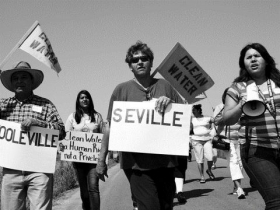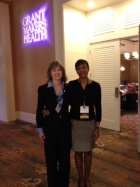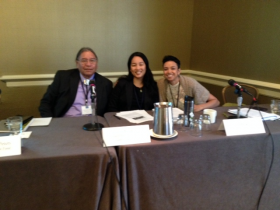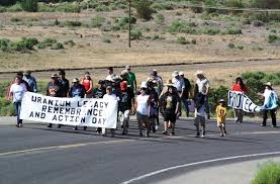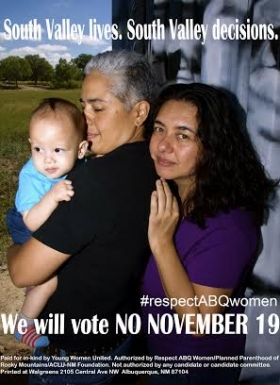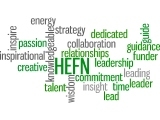This blog post was authored by HEFN Director Kathy Sessions.
Philanthropy can do a lot more to use “The Power of Voice” to promote health. This was the theme explored last week by over 500 funders who gathered in Atlanta for the 2014 Annual Meeting of Grantmakers In Health (GIH).
GIH President and CEO Faith Mitchell’s essay for the annual meeting pointed to many ways in which funders may raise up the needs of unserved and underserved communities -- or help communities effectively advocate for themselves.
HEFN Director Kathy Sessions and GIH President & CEO Faith Mitchell at the 2014 GIH Annual Meeting. Image source: Kathy Sessions
She also noted that foundations can do much more than many realize to lend their own voice to public debates. “Voice is one of the most important non-financial tools a foundation can use to support change.” Opening plenary speaker Alan Jenkins from the Opportunity Agenda urged health funders to improve their own communication skills, suggesting for instance that funders focus at least as much on conveying values and on highlighting solutions as they do on detailing data and describing problems.
Pediatrician Nadine Burke-Harris, another plenary speaker, talked about developing screening practices to help doctors talk more openly with families about adverse childhood experiences that might be impacting children’s health.
The meeting theme of “The Power of Voice,” was a great setup for a HEFN-organized session on “Megaphones are Preventive Medicine: Supporting Community Voices for Health and Health Equity.”
Grantmaker-grantee pairs at the HEFN-organized session. Image source: Kathy Sessions
This session featured three grantmaker-grantee pairs, each talking about how grants enabling health-impacted groups to organize and speak up helped lead to changes protecting their communities’ health.
Vanessa Daniel talked about how the Groundswell Fund has found that adding support for grassroots organizing often increases the effectiveness of other strategies, like direct service or research.
California nail salon worker. Image source: California Healthy Nail Salon Collaborative
Her grantee Lisa Fu illustrated this by sharing experiences from the California Healthy Nail Salon Collaborative. Organizing workers with reproductive and other health problems linked to workplace toxics, she reported, has won press and policymaker attention, encouraged salons to shift towards safer products and healthier workplaces, and cultivated leadership development within the salon worker community.
Chris Peters reflected on the Seventh Generation Fund for Indigenous Peoples’ experiences supporting place-focused organizing in indigenous communities. He urged philanthropy to focus not only on communities’ health “symptoms” but on the upstream causes, citing how U.S. energy policy decisions led to uranium mining and waste facilities on native lands with severe downstream health impacts.
Indigenous community members protesting uranium mining and waste facilities on native lands. Image source: Anna Rondon
His grantee Anna Rondon reported that local organizing triggered by the high incidence of birth defects – including a phenomenon deemed “Navajo neuropathy" – helped attract national press attention, Congressional hearings, and funding for a Navajo Birth Cohort Study.
Robby Rodriguez described civic engagement strategies used by the W.K. Kellogg Foundation’s New Mexico program to help its grantees address community health priorities, including mobilizing, leadership development, polling, and voter tracking. His grantee Tannia Esparza offered as illustration a recent victory in which Young Women United and its coalition partners defeated a referendum initiative to ban certain abortions, including lots of community organizing, communications work, and campaign advocacy.
Campaign poster against a referndum initiative in New Mexico that would ban certain abortions. Image source: Young Women United
The HEFN session also explored common obstacles or questions funders face as they consider funding grassroots community voices, as well as strategies for overcoming those problems. The session’s lively discussion suggested that this topic may be worth returning to in other HEFN programming or resources.
Other highlights for me of the GIH event also included seeing many HEFN members and GIH friends. HEFN Steering Committee members Vanessa Daniel, David Fukuzawa, and Earl Lui helped me host a breakfast roundtable on environmental health and justice, where we brainstormed with newcomers about their local environmental health interests and challenges.
As Faith Mitchell noted in her opening speech at the GIH meeting, over half of the philanthropies participating in GIH are locally-focused. Events like the annual GIH meeting give funders focused in many different local places great chances to learn from one another. And, hopefully, to return to those places more inspired and better equipped to strengthen voices advocating health for all.

